
Irkutsk Oblast is a federal subject of Russia, located in southeastern Siberia in the basins of the Angara, Lena, and Nizhnyaya Tunguska Rivers. The administrative center is the city of Irkutsk. It borders the Republic of Buryatia and the Tuva Republic in the south and southwest, which separate it from Khövsgöl Province in Mongolia; Krasnoyarsk Krai in the west; the Sakha Republic in the northeast; and Zabaykalsky Krai in the east. It had a population of 2,370,102 at the 2021 Census.
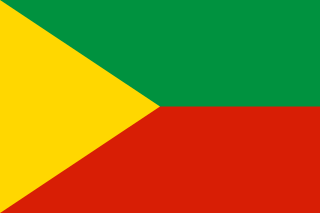
Chita Oblast was a federal subject of Russia in southeast Siberia, Russia. Its administrative center was the city of Chita. It had extensive international borders with China (998 km) and Mongolia (868 km) and internal borders with Irkutsk and Amur Oblasts, as well as with the republics of Buryatia and Yakutia. Its area was 431,500 square kilometers (166,600 sq mi). Population: 1,155,346 (2002 Census); 1,377,975 (1989 Soviet census).

Khakassia, officially the Republic of Khakassia, is a republic of Russia located in southern Siberia. It is situated between Krasnoyarsk Krai to the north and the Altai Republic to the south.

The Far Eastern Republic, sometimes called the Chita Republic, was a nominally independent state that existed from April 1920 to November 1922 in the easternmost part of the Russian Far East. Although nominally independent, it largely came under the control of the Russian Soviet Federative Socialist Republic (RSFSR), which envisaged it as a buffer state between the RSFSR and the territories occupied by Japan during the Russian Civil War of 1917–1922. Its first president was Alexander Krasnoshchyokov.
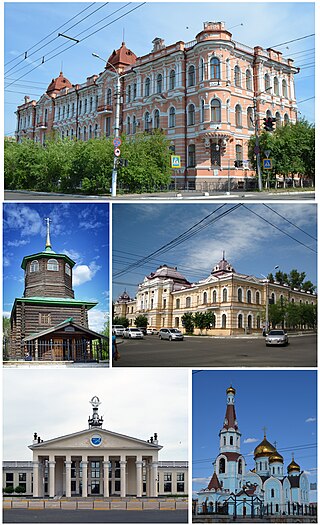
Chita is a city and the administrative center of Zabaykalsky Krai, Russia, located on the Trans-Siberian Railway route, roughly 900 kilometers (560 mi) east of Irkutsk. Population: 334,427 (2021 Census); 324,444 (2010 Census);
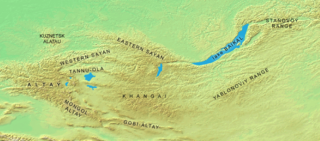
The Yablonoi Mountains or Yablonovy Mountains are a mountain range, in Transbaikal, Siberia, Russia. The range is sparsely inhabited with most settlements engaged in mining. The area is especially rich in tin. The city of Chita lies between the Yablonoi Mountains to the west and the Chersky Range to the east.

Hailar District, formerly a county-level city, is an urban district that serves as the seat of the prefecture-level city Hulunbuir in northeastern Inner Mongolia, China. Hulunbuir, due to its massive size, is a city in administrative terms only, being mainly grassland and rural.

JSC Angara Airlines is an airline based in Irkutsk, Russia.

Manzhouli is a sub-prefectural city located in Hulunbuir prefecture-level city, Inner Mongolia Autonomous Region, China. Located on the border with Russia, it is a major land port of entry. It has an area of 696.3 square kilometres (268.8 sq mi) and a population of almost 250,000.
Geographically, Siberia includes the Russian Urals, Siberian, and Far Eastern Federal Districts.

Zabaykalsky Krai is a federal subject of Russia, located in the Russian Far East. Its administrative center is Chita. As of the 2010 Census, the population was 1,107,107.
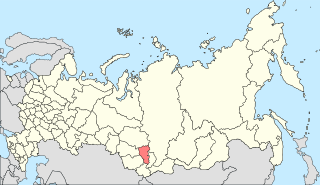
South Central Siberia is a geographical region north of the point where Russia, China, Kazakhstan and Mongolia come together.
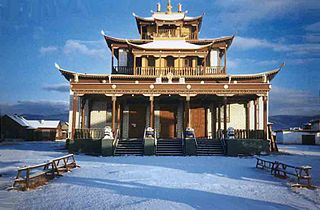
Historically, Buddhism was incorporated into Siberia in the early 17th century. Buddhism is considered to be one of Russia's traditional religions and is legally a part of Russian historical heritage. Besides the historical monastic traditions of Buryatia, Tuva and Kalmykia, the religion of Buddhism is now spreading all over Russia, with many ethnic Russian converts.
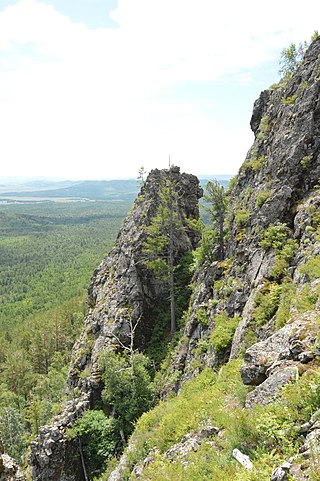
Alkhanay National Park encompasses the area around Mt. Alkhanai, a central focus and sacred mountain to the Buryats people, who today are the largest indigenous group in Siberia. Mt. Alkanai has been adopted as sacred by later Mongols, shamanistic people, and Buddhists. The Dalai Lama has made two unofficial visits to Alkhanay. The area takes its name from an old legend, in which a princess took refuge from her pursuers on the top of the mountain, defiantly shouting as they approached, "kill me!", which translates to "Alkhanai" in the local language. Despite the ancient name, the focus today of Buddhist pilgrims as they ascend the mountain pathway is one of peacefulness and healing. The park seeks to balance support for continued pilgrimage to the rock landforms and mineral springs, with conservation of nature and recreational tourism. Alkhanay NP is located in the Trans-Baikal region of Russia, about 300 miles east of the lake, and 75 miles north of Mongolia's northern border. It is in the administrative region of Aginsky District, Zabaykalsky Krai.

The 2019 Siberian wildfires began in July 2019 in poorly accessible areas of northern Krasnoyarsk Krai, Sakha Republic and Zabaykalsky Krai, all in Siberia, Russia. By the end of the month the size of the fires reached 2,600,000 hectares. As of 30 July, there had been no reported deaths or injuries due to the fires.

The Patom Highlands are a mountainous area in Eastern Siberia, Russia. Administratively most of the territory of the uplands is part of Irkutsk Oblast, with a smaller section in northern Zabaykalsky Krai.

From June 2021, the taiga forests in Siberia and the Far East region of Russia were hit by unprecedented wildfires, following record-breaking heat and drought. For the first time in recorded history, wildfire smoke reached the North Pole.
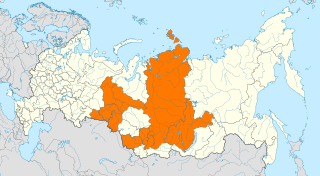
The 2022 Siberian wildfires were a series of wildfires in Russia that began in Siberia in early May 2022. Fires were concentrated in the Krasnoyarsk, Altai, Irkutsk, Kemerovo, Omsk, Kurgan regions, Khakassia and Sakha republics.
East Siberian Krai is an administrative-territorial unit in the RSFSR, which existed from July 30, 1930, to December 5, 1936.

In 2024, far-reaching wildfires ignited and spread across large areas of Russian territory, primarily in Siberia and also in southern regions. The wildfires resulted in a burnt area of 8.8 million hectares by July 18, and carbon emissions of 6.8 megatons by July 1, equaling the combined June-July emissions of 2023 in just one month.


















